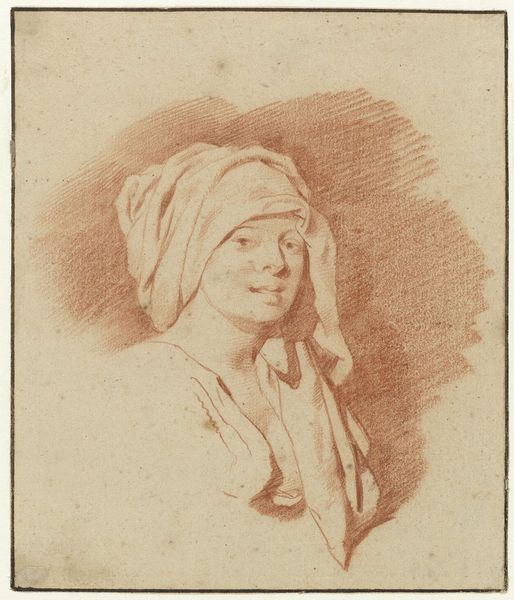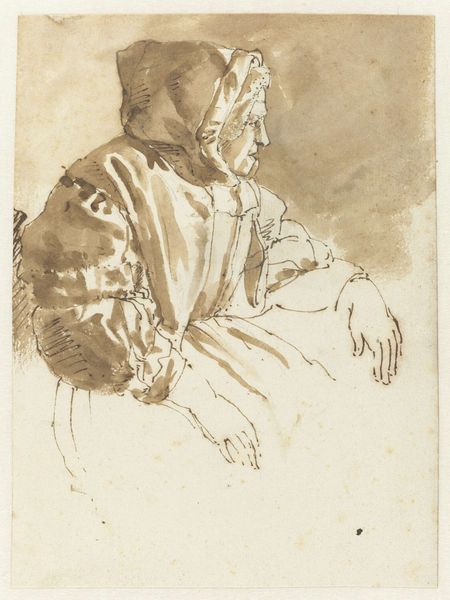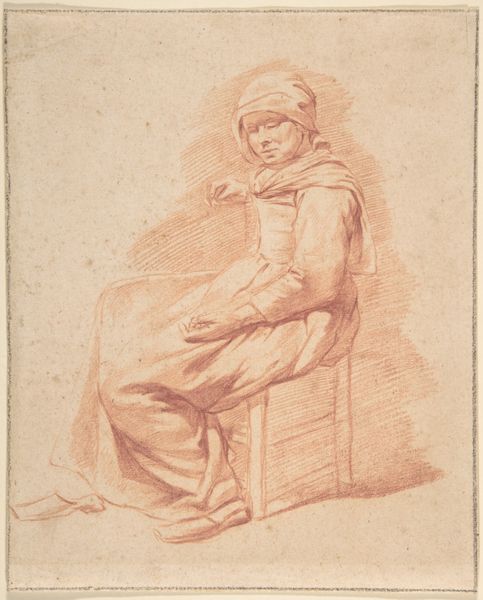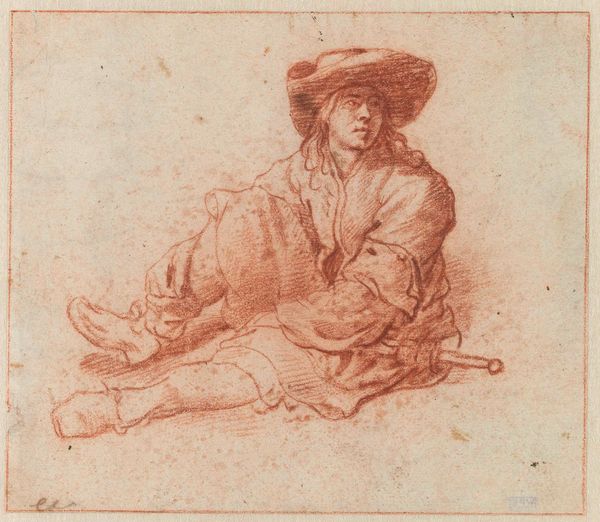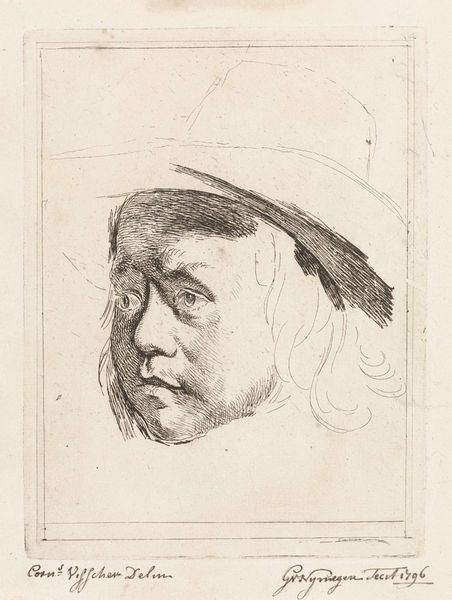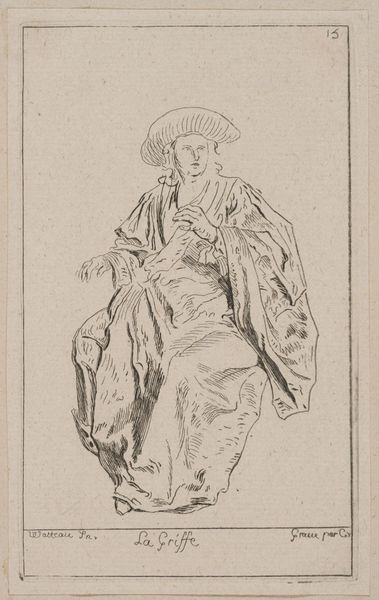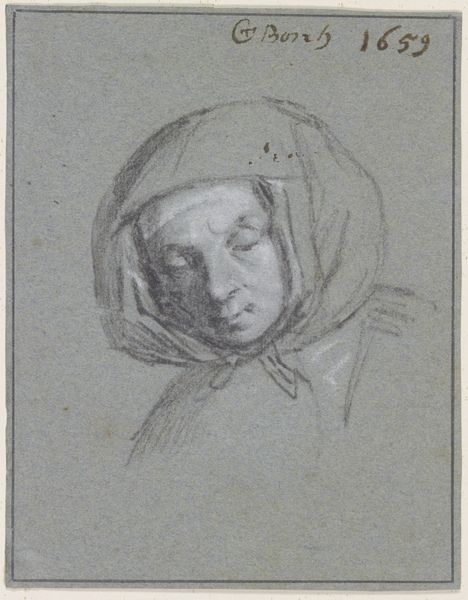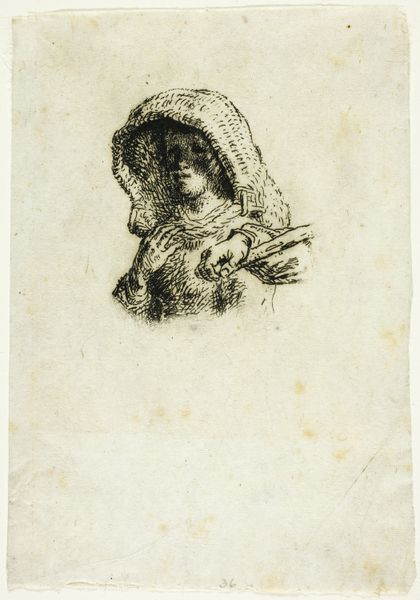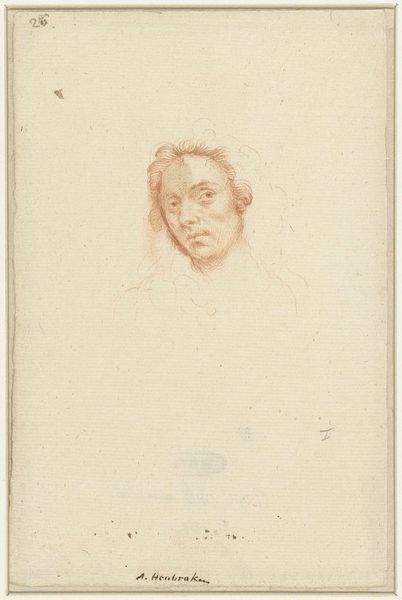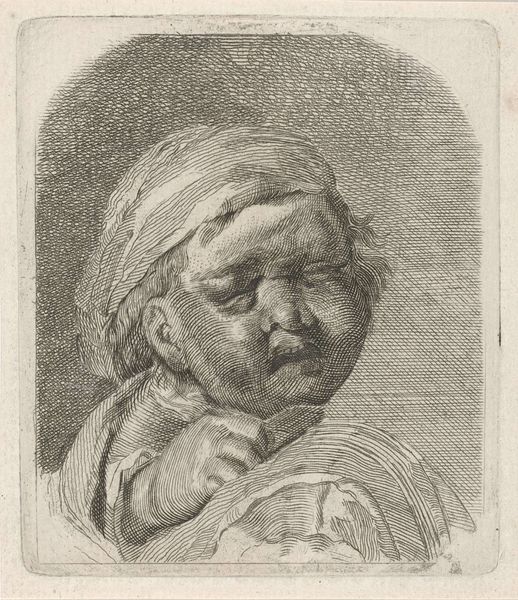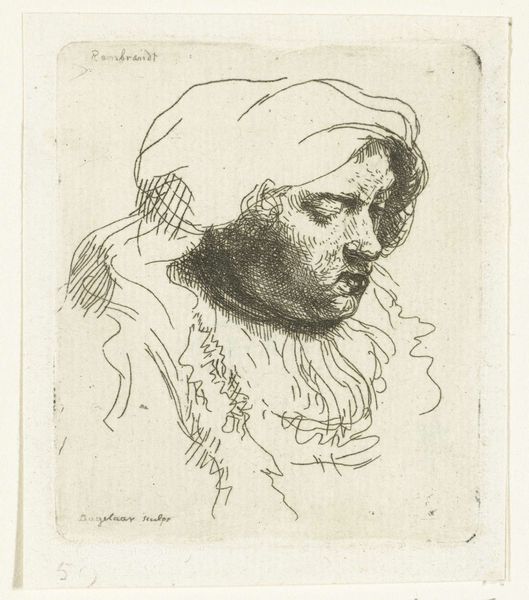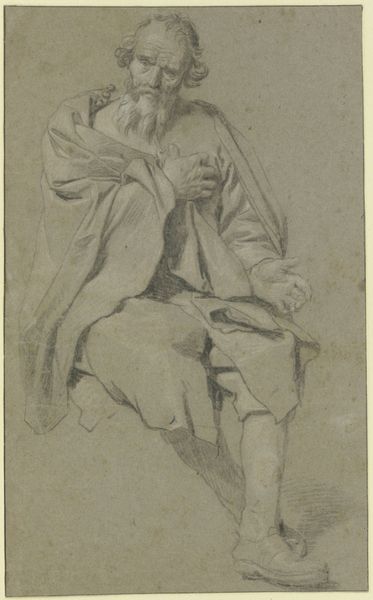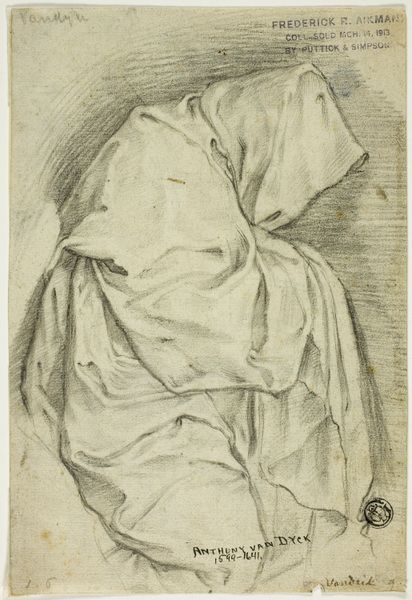
Study of a Woman, Bust Length, Facing Slightly Left and Looking Down c. 1661 - 1664
0:00
0:00
drawing, dry-media, chalk
#
portrait
#
pencil drawn
#
drawing
#
baroque
#
pencil sketch
#
dry-media
#
pencil drawing
#
chalk
#
portrait drawing
Dimensions: height 133 mm, width 114 mm
Copyright: Rijks Museum: Open Domain
Curator: There's such quiet contemplation radiating from this portrait. She seems lost in thought, almost melancholy. Editor: Indeed. Let’s consider Cornelis Bega’s “Study of a Woman, Bust Length, Facing Slightly Left and Looking Down," created around 1661 to 1664, which you can currently view at the Rijksmuseum. What's striking to me is how the chalk medium both reveals and conceals. The hatching and layering—the very process of applying dry media—shapes our understanding of her. Curator: Absolutely. The artist’s choice of a red chalk pencil intensifies the warm skin tones but simultaneously presents her in perhaps a domestic or quotidian light. It is as though the material guides our perception of her role in Dutch society during this time. Editor: Precisely! What societal role *was* that, though? We see her in a cap, headscarf, simple garment – items mass produced in textile industries of the period. Her apparent resignation sparks questions. Who was she? What conditions framed her reality and informed her downcast gaze? The materials lead me to more cultural concerns. Curator: That's interesting. I tend to see the cap not as just functional headgear but perhaps as conveying information about social status. Its crafting – the visible texture and how it drapes, suggests a level of material comfort accessible to some. Consider also that Bega, while celebrated, faced legal challenges involving tavern brawls; it makes one ponder whether this piece indirectly engages his own labor versus hers, reflecting socio-economic stratifications inherent in the 17th century Dutch world. Editor: Right. Although some period artists may not have acknowledged such dynamics overtly, studying what survives enables us to piece narratives of their contexts today. We observe how art itself can turn into a site chronicling evolving norms; depictions can offer insight not available by documentation alone. Curator: It’s fascinating how studying material culture invites layers of social, economic, and personal interpretation. We began discussing chalk but moved immediately into wider realms. Editor: A true illustration—both visual and intellectual. Examining her circumstances as we do, transforms looking to seeking.
Comments
No comments
Be the first to comment and join the conversation on the ultimate creative platform.
